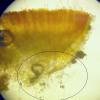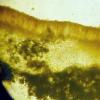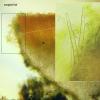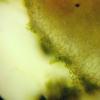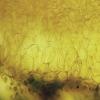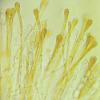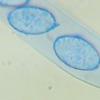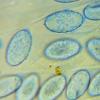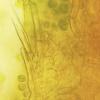
07-12-2025 16:07
Arnold BüschlenHallo, ich habe in einer Moos-Aufsammlung (epiphy

08-12-2025 21:04
Mark Stevens"Hello everyone,I'm relatively new to microscopy (

09-12-2025 12:06
 Andgelo Mombert
Andgelo Mombert
Bonjour,Je recherche l'article concernant Hypobryo

08-12-2025 18:59
 Lothar Krieglsteiner
Lothar Krieglsteiner
.. found by a seminar-participant, I do not know t

08-12-2025 17:37
 Lothar Krieglsteiner
Lothar Krieglsteiner
20.6.25, on branch of Abies infected and thickened

16-03-2014 22:00
Hello,I found this species a few months ago but ha

08-12-2025 13:39
Thomas Læssøehttps://svampe.databasen.org/observations/10572899
Cheilymenia sp.
Mirek Gryc,
26-06-2022 17:53
I have a considerable problem with Cheilymenia, so I am asking for people who dealt with this type for help.
Together with her in the same place, Melastiza carbonicola, Scutellinia crucipila and slightly different Cheilymenia sp.
I probably microscoped with ten ascoms to make sure I would not find on the bottom side of the starry hair. The only hair that I observed was on the edge of ascomata.
Spores:
(13.8) 14.2 - 17.8 (18) × (8) 8.3 - 9.37 (9.4)µm
Q = (1.6) 1.7 - 2.06 (2.1); N = 14
Me = 16.3 × 8.8 µm; QE = 1.9
16.76 7.95
14.22 8.45
13.79 8.66
15.32 8.76
15.10 8.44
16.75 9.42
15.74 9.11
17.99 8.73
16.05 8.84
17.52 9.37
17.82 9.36
16.22 8.91
17.53 8.50
17.17 8.32
Microscopic features are in line with the Alpine species: Cheilymenia chionophila.
Was this species listed from lowland areas?
Regards
Mirek
Nicolas VAN VOOREN,
27-06-2022 07:40

Re : Cheilymenia sp.
Illustrated ascospores point to Cheilymenia crucipila.
Mirek Gryc,
27-06-2022 11:56
Re : Cheilymenia sp.
Hi Nicolas
Yes, of course, spores are very similar to Cheilymenia crucipila spores and that is why the matter seems so difficult. I was aware of this but so far I did not open the thread on the forum although I found them for the first time on June 5. At that time, only this species with Melastiza carbonicola performed there, there were hundreds of them.
I remembered perfectly with Cheilymenia crucipila from previous years, but I thought that this may be habitat variability, although as usual they grew up on muddy soil.
These photos I present come from June 25. I specially went there to get fresh ascomata again. At the place of their growth, I found only a small number of them this time. However, a lot of ascomata Cheilymenia crucipila grew up next to it. Of course, I downloaded both collections for comparative purposes to exclude their variability. You have to take my word for me that I didn't find any forking hair on any ascomat. In this collection, there is very little hair in general, delicate, hyaline, not protruding beyond the edge of ascomat, set slightly below the margin. Most of the lower surface is completely devoid of hair .. Ascomat, unlike the mature Cheilymenia crucipila, very much adheres to the ground. The lower surface is covered with algae or some moss, very difficult to observe. At the base there are hylain shreds imitating hair. Ascomat of this collection is definitely smaller than Ascomat Cheilymenia crucipila. I can also see the difference in color, Crucipila cheymenia is definitely brighter (more orange).
The reaction of the contents of the parish to iodine is identical.
The above -mentioned features duplicate in all the ascoms I studied (including today, it will definitely be over ten pieces). Today I checked two more ascomat in full. I watched the lower surface under a microscope. The observed features so far have been unchanged.
Therefore, I cannot consider her as Cheilymenia crucipila. Will remain Cheilymienia sp. I will try to find them in the next year and see if these features will be confirmed?
Thank you for expressing your opinion and best regards.
Mirek
Yes, of course, spores are very similar to Cheilymenia crucipila spores and that is why the matter seems so difficult. I was aware of this but so far I did not open the thread on the forum although I found them for the first time on June 5. At that time, only this species with Melastiza carbonicola performed there, there were hundreds of them.
I remembered perfectly with Cheilymenia crucipila from previous years, but I thought that this may be habitat variability, although as usual they grew up on muddy soil.
These photos I present come from June 25. I specially went there to get fresh ascomata again. At the place of their growth, I found only a small number of them this time. However, a lot of ascomata Cheilymenia crucipila grew up next to it. Of course, I downloaded both collections for comparative purposes to exclude their variability. You have to take my word for me that I didn't find any forking hair on any ascomat. In this collection, there is very little hair in general, delicate, hyaline, not protruding beyond the edge of ascomat, set slightly below the margin. Most of the lower surface is completely devoid of hair .. Ascomat, unlike the mature Cheilymenia crucipila, very much adheres to the ground. The lower surface is covered with algae or some moss, very difficult to observe. At the base there are hylain shreds imitating hair. Ascomat of this collection is definitely smaller than Ascomat Cheilymenia crucipila. I can also see the difference in color, Crucipila cheymenia is definitely brighter (more orange).
The reaction of the contents of the parish to iodine is identical.
The above -mentioned features duplicate in all the ascoms I studied (including today, it will definitely be over ten pieces). Today I checked two more ascomat in full. I watched the lower surface under a microscope. The observed features so far have been unchanged.
Therefore, I cannot consider her as Cheilymenia crucipila. Will remain Cheilymienia sp. I will try to find them in the next year and see if these features will be confirmed?
Thank you for expressing your opinion and best regards.
Mirek


